Bioclear Case Study
Bioclear Method restoration of a cosmetically failing traditional composite restoration of a central incisor.
The following case study describes how the Bioclear Method was used to treat a cosmetically failed traditional composite restoration of an upper central incisor.
This patient had orthodontic treatment with a local dentist to correct her occlusion. Within two weeks of completion of orthodontic treatment she had a bang to her front tooth. This resulted in a dentine fracture of the upper right central incisor. The tooth was subsequently restored using a traditional layered composite restoration.
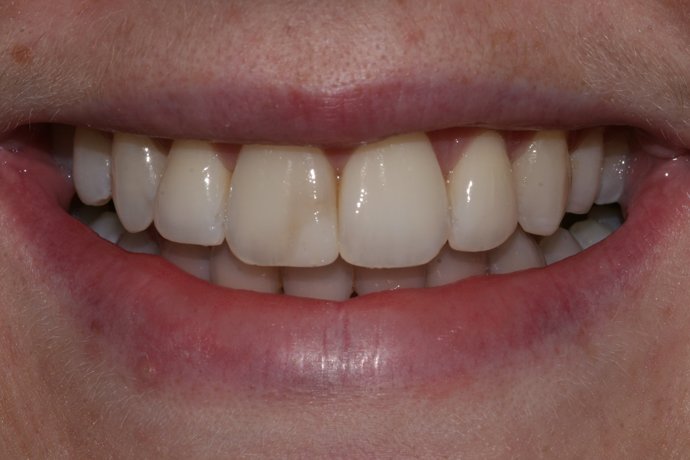
The line between the tooth and composite restoration was becoming noticeable.
The lady attended our practice several months after the restoration with concerns over the appearance of the tooth. She was conscious that the line between the tooth and composite restoration was becoming noticeable. Friends and family had commented on the visibility of the line.
The fracture line was diagonal, which can be one of the hardest margins to mask clinically when restoring a tooth. The patient elected to proceed with a Bioclear Method composite restoration using the infinity edge margin to mask the fracture line.
Clinically, a single shade was selected to match the tooth shade. The selected shade of composite compules were then heated using the HeatSync heater to 70 degrees.
The front four teeth were isolated using rubber dam. The tooth was disclosed and the Biofilm was removed by basting the tooth with water and Aluminium Trihydroxide using the Bioclear Blaster. This was repeated to ensure all Biofilm was successfully removed.
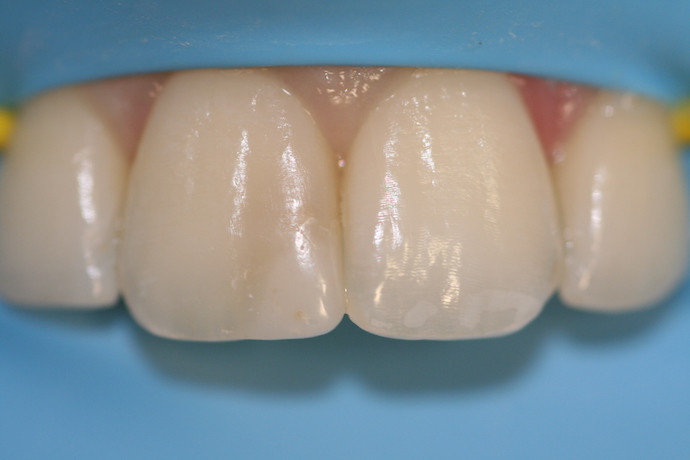
The front four teeth were isolated using rubber dam.
The old composite was then removed and the margin was refined to produce an infinity edge margin.
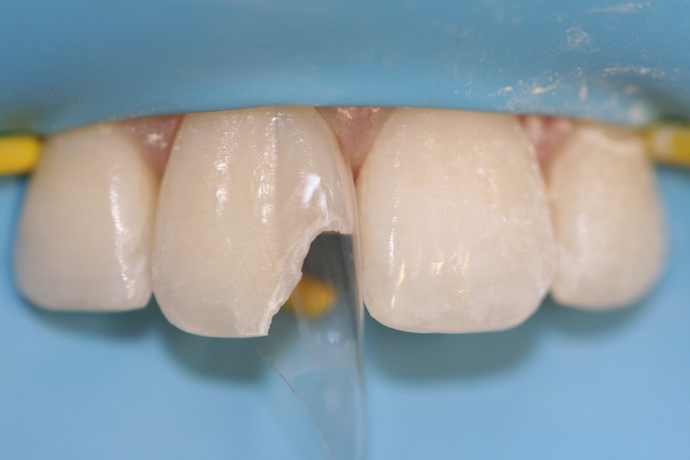
The old composite was removed prior bioclear restoration.
An anatomical Bioclear matrix was selected for the mesial surface of an anterior tooth. The Bioclear matrices are anatomically shaped matrices, which allow you to recreate the correct emergence profile and anatomy of the restored tooth. The process of injection-overmoulding of the composite was then used to restore the tooth. The restoration was shaped using a combination of fine diamond burs and Soflex discs. No interdental finishing or shaping was required as the matrices provided the correct shape and smooth Mylar finish. The restoration was completed using the Bioclear Method 3 step polish.
The occlusion was confirmed after removal of the rubber dam.
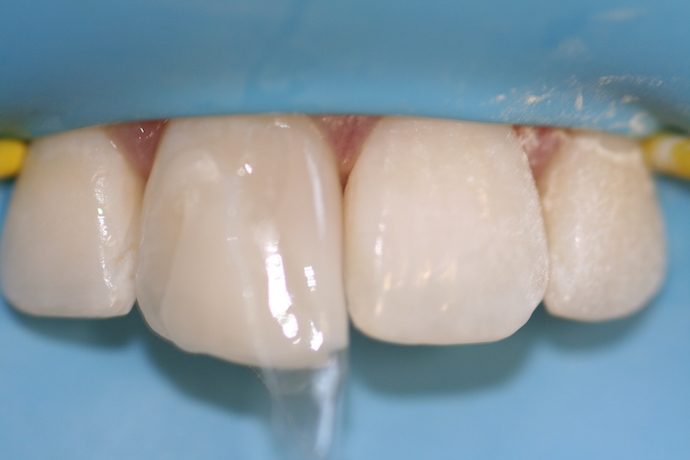
The restoration was completed using the Bioclear Method 3 step polish.
The patient was very pleased with the result. 6 months later whilst in a gym class she was hit in the mouth with a dumbbell. She attended to check the restoration – there was no damage to the restoration. Amazing considering the force of the impact of the dumbbell.
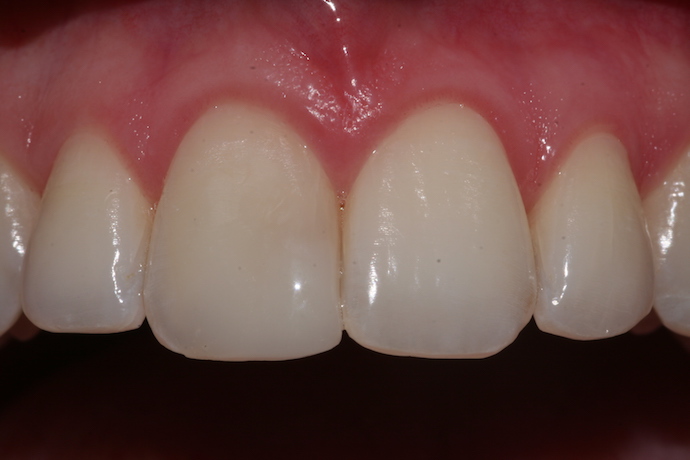
Choose the Bioclear Method for longer lasting, stronger, and aesthetically superior composite restoration results.
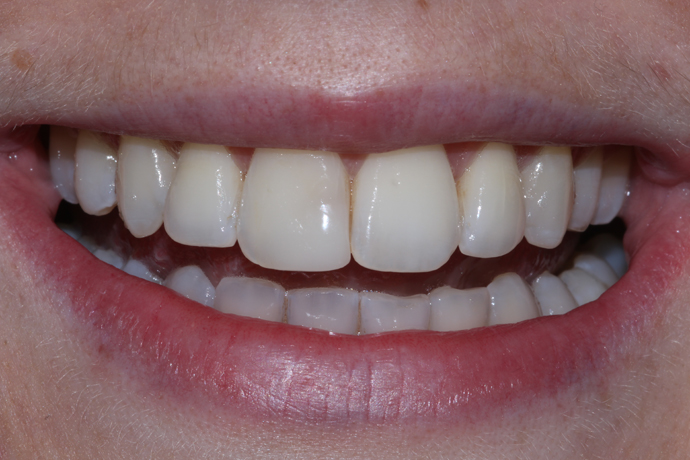
The same patient, two years later.
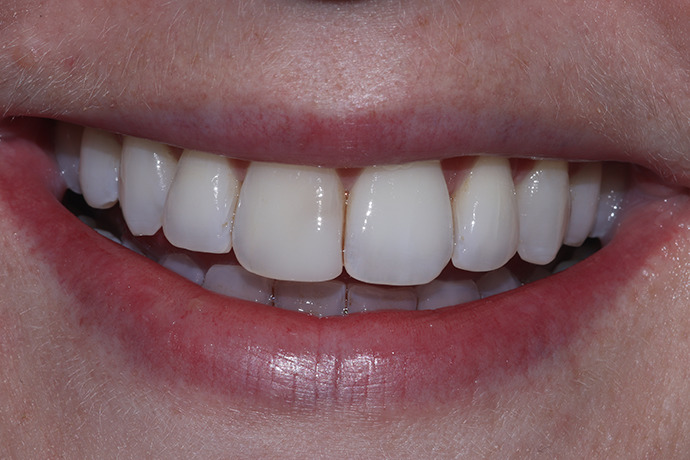
The same patient, seven years later.
The Bioclear matrices are the only anatomical anterior matrices. They enable dentists to successfully treat a variety of clinical situations including standard class III restorations and more complex black triangle and Diastema closures.
The Bioclear matrices form one component of the Bioclear Method, which allows dentists to predictably produce longer lasting, stronger, and aesthetically superior composite restorations.
- Are you a patient? Read the Bioclear Method explained for more information on the Bioclear matrices and this composite restoration.
- Are you a dentist with Bioclear equipment and would like further training? You can find out more about the Bioclear Method Composite Courses (Level 1, 2, 3 and 4) held at Dominic Hassall Training Institute, near Birmingham.
Claire Burgess
BDS (Birmingham)
MFDGP RCS (London)
MSc Restorative and Cosmetic Dentistry (UCLan)
Certified UK Bioclear Instructor.

